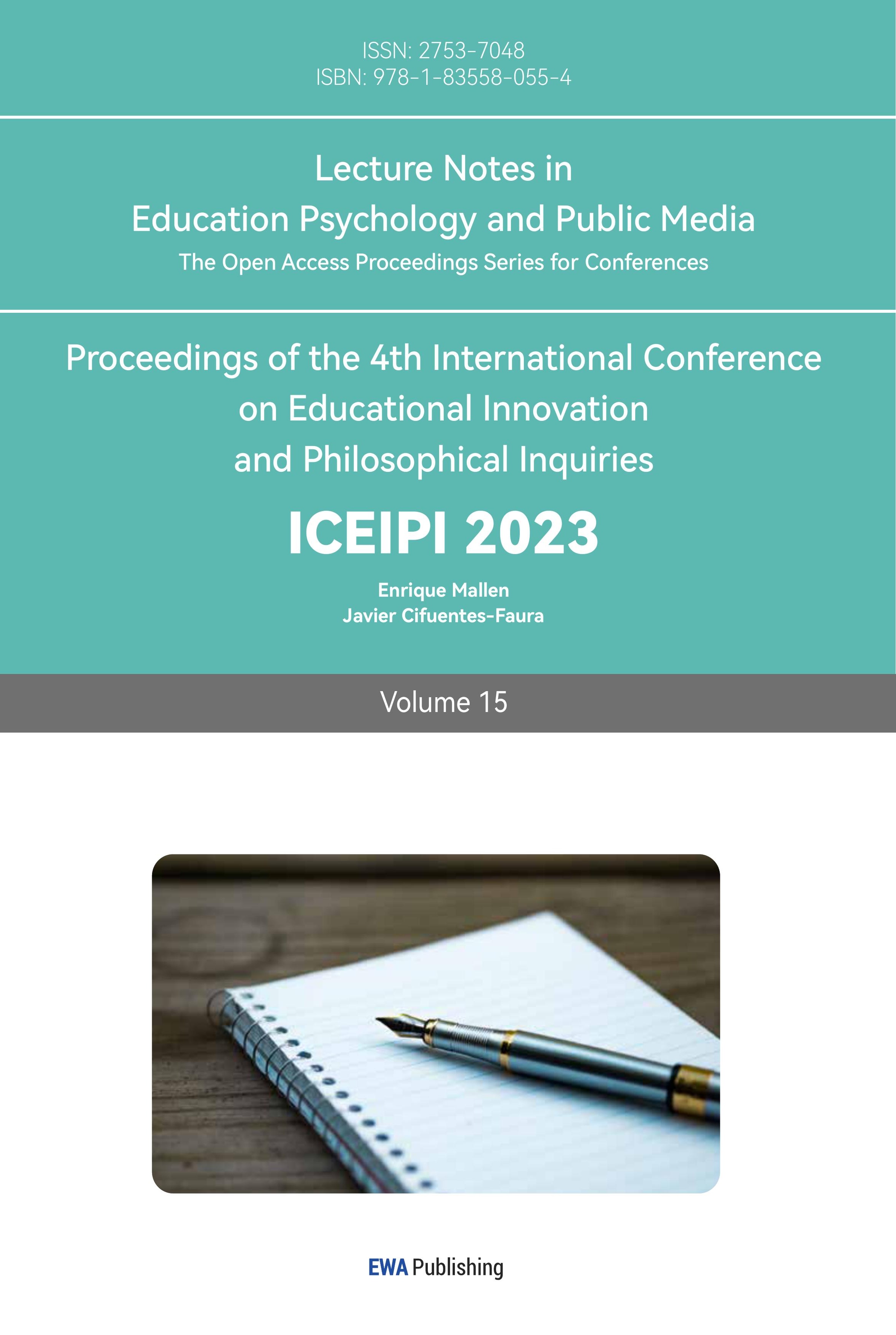References
[1]. Ying Gao, (2019) Cognitive guidance and improvement of Alzheimer’s disease patients based on human-computer interaction design, Cognitive Systems Research, 56, 192-202.
[2]. International AsD. World Alzheimer report 2019: attitudes to dementia. In: Book World Alzheimer Report 2019: Attitudes to dementia (Editor ed.^eds.). London: Alzheimer’s Disease Internationals; 2019.
[3]. Lyketsos CG, Lopez O, Jones B, Fitzpatrick AL, Breitner J, DeKosky SJJ. (2002) Prevalence of neuropsychiatric symptoms in dementia and mild cognitive impairment: results from the cardiovascular health study. Jama. 288: 1475–83.
[4]. Yi Jiahui. Research on the Design of Educational Products for the Elderly Based on Interactivity [D]. Beijing Institute of Technology, 2015.
[5]. M. Sudharsan, G. Thailambal, (2022) A Recognition of Alzheimer Disease using Brain MRI Images with DPNMM through Adaptive Model”, In proc. 2022 Int. Conf. on Edge Computing and Applications (ICECAA), 952-959.
[6]. Jiang Fei, (2023) Practical Research on Application of Material Innovation in Product Design [J]. Art Appreciation. 06.
[7]. Liu Xia, (2022) Can we cure Alzheimer’s disease in the next ten years [N] Science and Technology Daily 8-22.
[8]. Analysis on the Application of Beauty of Symmetry in contemporary Architectural Space [J] Cultural Monthly 2018 (08)
[9]. Huang Jian. (2012) The important standard of healthy old people - bright eyes[J].Middle-aged and elderly health care, 06.
[10]. Chang Min. (2021) Analysis and forecast of global ABS supply and demand [J]. World Petroleum Industry, 03.
Cite this article
Li,Y.;Lai,Y. (2023). Product Design for Preventing Alzheimer’s Disease in Aging Society. Lecture Notes in Education Psychology and Public Media,15,64-74.
Data availability
The datasets used and/or analyzed during the current study will be available from the authors upon reasonable request.
Disclaimer/Publisher's Note
The statements, opinions and data contained in all publications are solely those of the individual author(s) and contributor(s) and not of EWA Publishing and/or the editor(s). EWA Publishing and/or the editor(s) disclaim responsibility for any injury to people or property resulting from any ideas, methods, instructions or products referred to in the content.
About volume
Volume title: Proceedings of the 4th International Conference on Educational Innovation and Philosophical Inquiries
© 2024 by the author(s). Licensee EWA Publishing, Oxford, UK. This article is an open access article distributed under the terms and
conditions of the Creative Commons Attribution (CC BY) license. Authors who
publish this series agree to the following terms:
1. Authors retain copyright and grant the series right of first publication with the work simultaneously licensed under a Creative Commons
Attribution License that allows others to share the work with an acknowledgment of the work's authorship and initial publication in this
series.
2. Authors are able to enter into separate, additional contractual arrangements for the non-exclusive distribution of the series's published
version of the work (e.g., post it to an institutional repository or publish it in a book), with an acknowledgment of its initial
publication in this series.
3. Authors are permitted and encouraged to post their work online (e.g., in institutional repositories or on their website) prior to and
during the submission process, as it can lead to productive exchanges, as well as earlier and greater citation of published work (See
Open access policy for details).
References
[1]. Ying Gao, (2019) Cognitive guidance and improvement of Alzheimer’s disease patients based on human-computer interaction design, Cognitive Systems Research, 56, 192-202.
[2]. International AsD. World Alzheimer report 2019: attitudes to dementia. In: Book World Alzheimer Report 2019: Attitudes to dementia (Editor ed.^eds.). London: Alzheimer’s Disease Internationals; 2019.
[3]. Lyketsos CG, Lopez O, Jones B, Fitzpatrick AL, Breitner J, DeKosky SJJ. (2002) Prevalence of neuropsychiatric symptoms in dementia and mild cognitive impairment: results from the cardiovascular health study. Jama. 288: 1475–83.
[4]. Yi Jiahui. Research on the Design of Educational Products for the Elderly Based on Interactivity [D]. Beijing Institute of Technology, 2015.
[5]. M. Sudharsan, G. Thailambal, (2022) A Recognition of Alzheimer Disease using Brain MRI Images with DPNMM through Adaptive Model”, In proc. 2022 Int. Conf. on Edge Computing and Applications (ICECAA), 952-959.
[6]. Jiang Fei, (2023) Practical Research on Application of Material Innovation in Product Design [J]. Art Appreciation. 06.
[7]. Liu Xia, (2022) Can we cure Alzheimer’s disease in the next ten years [N] Science and Technology Daily 8-22.
[8]. Analysis on the Application of Beauty of Symmetry in contemporary Architectural Space [J] Cultural Monthly 2018 (08)
[9]. Huang Jian. (2012) The important standard of healthy old people - bright eyes[J].Middle-aged and elderly health care, 06.
[10]. Chang Min. (2021) Analysis and forecast of global ABS supply and demand [J]. World Petroleum Industry, 03.









